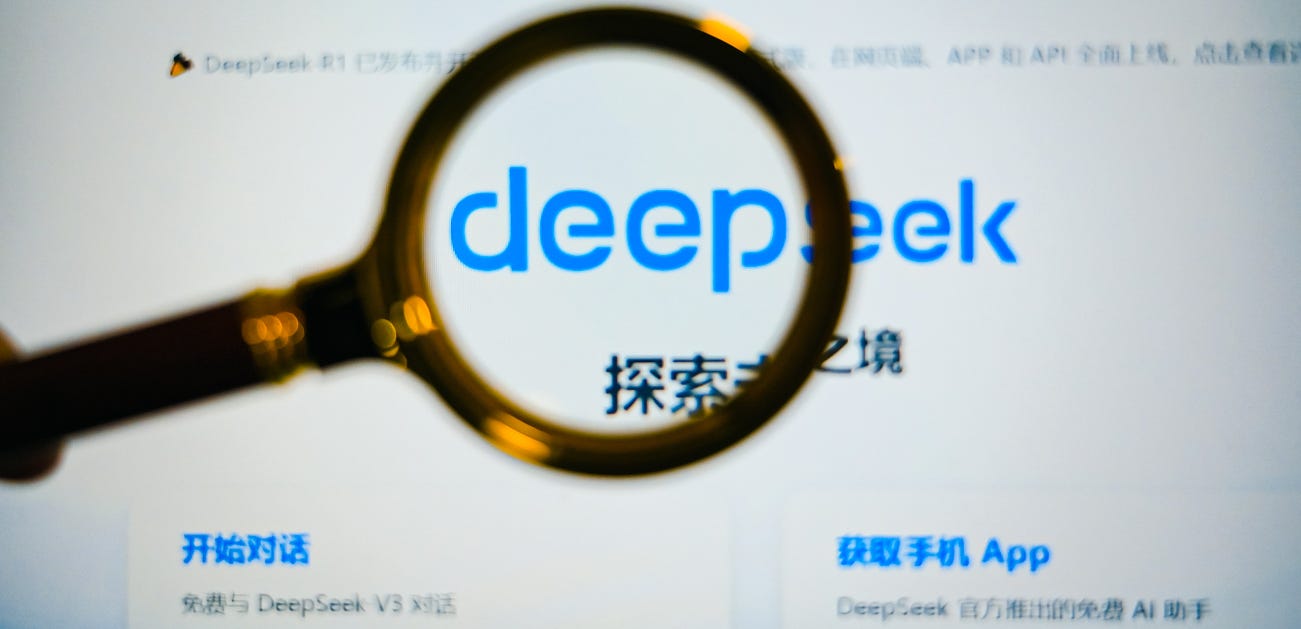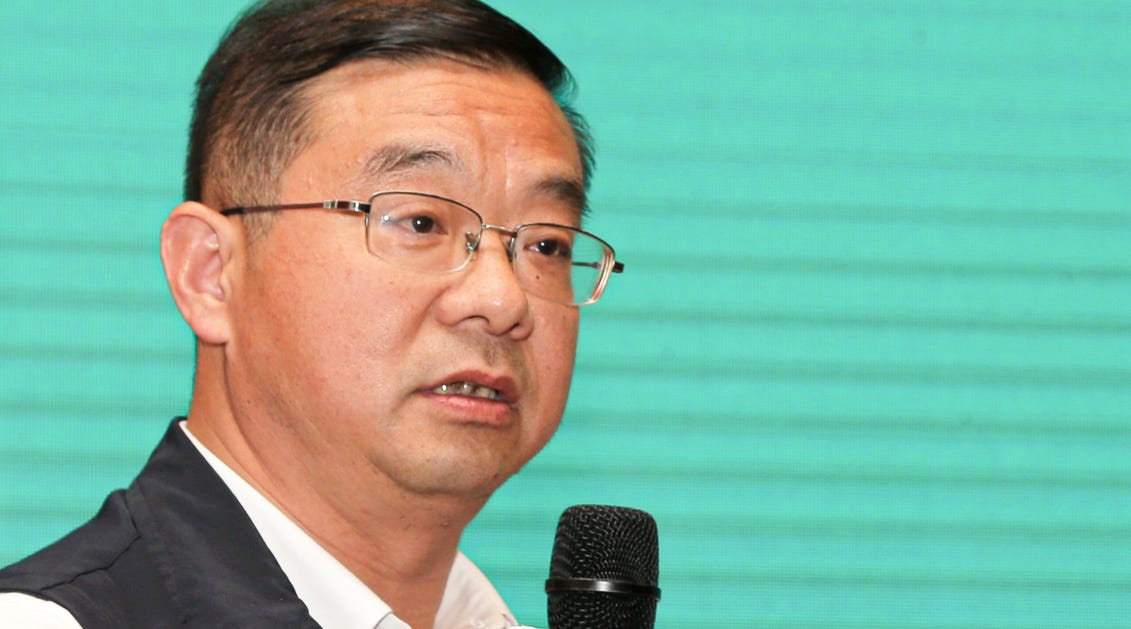Our last post looked at Beijing’s continuing scitech funding spree that aims to build more disruptive firms like DeepSeek. Today, we look at how quickly low-cost, open-source AI is being integrated across PRC business and the public sector.
the DeepSeek moment—how is this shifting policy?
Beijing channels C¥1 tn venture capital to the tech sector
localities pile in with more funds
mass deployment could give Beijing a leg up in shaping global AI governance
In January 2025, DeepSeek caught the world off guard with its ultra-low training spend of a mere US$5.5 million, far below OpenAI’s GPT-4 or Meta’s LLaMA. The DeepSeek API price was set at 1/70th of GPT-4 Turbo. The breakthrough reinforced local confidence in Beijing's tech roadmap and economic future.
An unprecedented C¥1 tn venture capital fund was launched at the 2025 Two Sessions, aiming to build more disruptive firms like DeepSeek. Zhipu AI enjoyed a C¥500 million boost from state-owned Huafa Group. Now a catalyst for the broader AI ecosystem, DeepSeek is counted on to spark an innovation wave. Investor scepticism, prevalent just months earlier, dissipated, replaced with not a little hubris.
More locally, Beijing Zhongguancun (home to DeepSeek’s R&D team) nailed down details of its AI ambition soon after the latest revelations. It dangles a swathe of support exceeding C¥1 billion for sectors like AI and integrated circuits. It channels annual funding to core research, power subsidies, ‘data rewards’ (that guide AI learning), and ‘scenario support’. The point is to build an innovation-driven, industry-leading hub with global influence, creating a world-class AI cluster.
Deepseek’s emergence is coupled with a subtle realignment of state-market relations. SOEs are now seizing the AI edge to beef up conventional industries under the AI+ initiative. SOEs are on notice to support new tech and its transfer to industry. The state pledges more opportunities, urging private firms to find their place within its objectives.
reshaping hospitals, power plants and town halls
DeepSeek is being taken up at breakneck speed across government and business. Its open-source model and lower costs kick-start large-scale and localised applications. Its transparency, scalability, and scope for partnering drive rapid customisation and integration of AI into industry-specific roles.
In healthcare, DeepSeek is now found in over 20 provinces and cities. Over 100 major tertiary hospitals deploy it for medical imaging, patient services, clinical decisions (assisting doctors) or record management. Its strengths in deep reasoning and resolving complexity are advancing rare disease diagnosis.
Scores of SOEs in oil and gas, grid, nuclear and power generation have adopted the model, which cut costs for exploration, production management and equipment monitoring.
From first- and second-tier cities to the township level, affordable hardware and computing power are spreading AI through the public sector. Avant-garde local governments race to recruit these advantages, drafting documents, suggesting policies, analysing data, and consulting externally.
Beijing is also strengthening its position in global AI governance by engagement in developing international standards, such as the recently released International Electrotechnical Commission (IEC) standard for elderly care robots.
rivals in catch-up mode
Mass adoption has set PRC rivals scrambling. Tencent, Baidu, Alibaba, ByteDance, et al. are baking DeepSeek into their services as they race to adjust their R&D and commercial strategies. Developers now prioritise advancing the benchmarks of their foundation models: efficiency, reasoning accuracy and complex task execution, instead of monetisation.
Baidu is embracing DeepSeek’s open-source strategy. Its Ernie 4.5 model will stay open-source, regardless of the business downside.
Computing power rivalry, too, is on the march. Just add chips, it would seem, to get a smarter model. Alibaba will invest C¥380 billion in AI and cloud infrastructure over three years. ByteDance acquired 100,000 modified Nvidia chips from PRC suppliers to boost computing capacity.
risks in accuracy, safety and responsibility
Besides usual warnings about AI ethics—IP disputes, deepfakes and cyber fraud raised at the Two Sessions—experts cite other threats borne by the AI tsunami.
Hallucination, fraud, and miscomprehension remain prevalent, warns Ma Yanxin 马颜昕 South China Normal University. Large AI models are inappropriate sources of legal judgments or decisions; their deployment in administration, says Ma, should hence be ‘slow, conservative and cautious’.
Internet hospitals are being banned from prescribing drugs without doctor supervision. Hunan and Beijing banned such usage in February 2025.
AI, adds Zhang Chang 张畅 IQVIA China head of AI innovation, has yet to meet standards for accuracy, safety or compliance in healthcare. Doctors are prone to omit patient details like medical history when working with and training AI, falling short of the all-round judgment expected of physicians. Nor can legal responsibility be attributed: AI lacks independent actor status, notes Deng Yong 邓勇 Beijing University of Chinese Medicine health law research centre. Without human oversight, AI may enable insurance fraud via fake prescriptions. Rules and limits of its use in prescriptions need clear definitions.
As to potential future impacts, AI is double-edged. Replacing some jobs, it will create new roles in data governance, manufacturing and specialised training, says Wang Jiangping 王江平 Chinese People's Political Consultative Conference national committee member and former MIIT vice minister.
AI experts
Xu Yucai 徐毓才 | Deputy Director of the Shangyang County Health Bureau
In hospitals, DeepSeek helps ease staff workloads; prescribing medicines is off-limits. Policymakers may not share the enthusiasm of a sector eager for AI-driven solutions; Xu hopes for an AI-powered future of medical treatment. Addressing the shortage of quality healthcare in rural areas, its adoption aligns with smart healthcare, rural telemedicine services and other initiatives.
Xu contends that regulation should not hinder adoption. AI skills can be readily integrated into current medical liability frameworks. He suggests that responsibility should align with usage: healthcare agencies assume liability when they use AI, while patients bear responsibility when using it independently. This entails policy adjustment rather than restriction.
Grassroots doctor and hospital director, Xu became a vice director of the local health bureau in Shangyang, Shanxi, in 2019. A member of the China Medical Association Hospital Management Committee, he is now a Deputy Director of the Shanyang County Health Bureau and is a County Political Consultative Conference member.
Ma Yanxin 马颜昕 | Distinguished Researcher at South China Normal University
Large AI models are well-suited for specific areas of government services. Documents are typically systematic and standardised, mitigating challenges large models face in training on textual data.
Such services often include hotlines and Q&A sessions, where staff rely on policy texts for answers. This aligns well with the current use of large models as customer service assistants. Its application can help some regions use existing computing resources more efficiently.
However, it cannot be used as a ‘general artificial intelligence’ (AGI) in decision-making. Hallucinations and legal concerns are significant issues in AI decision-making. Unreliable, discriminatory or incoherent decisions are under ever-greater local government scrutiny.
A distinguished researcher at South China Normal University, Ma Yanxin holds an Ll.D. in law from China University of Political Science and Law. He directs the university's Digital Government and Digital Economy Law Research Centre and has multiple academic and advisory positions.
Liu Qingfeng 刘庆峰 | iFlyTek chair, National People's Congress representative
Data and cyberspace authorities should periodically remove hallucinated data. Liu suggests that AI is generating false information, which may enter new AI training cycles. He also advocates offering the public tools to detect AI-generated content. He believes universities and training institutions should adjust their curricula to mitigate the risk of job losses. Unemployment risk warning platforms should be introduced in manufacturing hubs like the Yangtze River Delta and the Pearl River Delta. A 6–12 month buffer with unemployment insurance should also be piloted for jobs most affected by AI.
Liu Qingfeng is the chairman of iFlyTek and co-chair of the Chinese Academy of Sciences AI innovation alliance. He founded iFlyTek in 1999 while pursuing his PhD at the University of Science and Technology of China in Hefei. Under his leadership, the company has become one of the leading firms in speech synthesis technology. As a National People’s Congress representative, Liu is a frequent commentator on AI regulations and the country’s AI development strategies.








